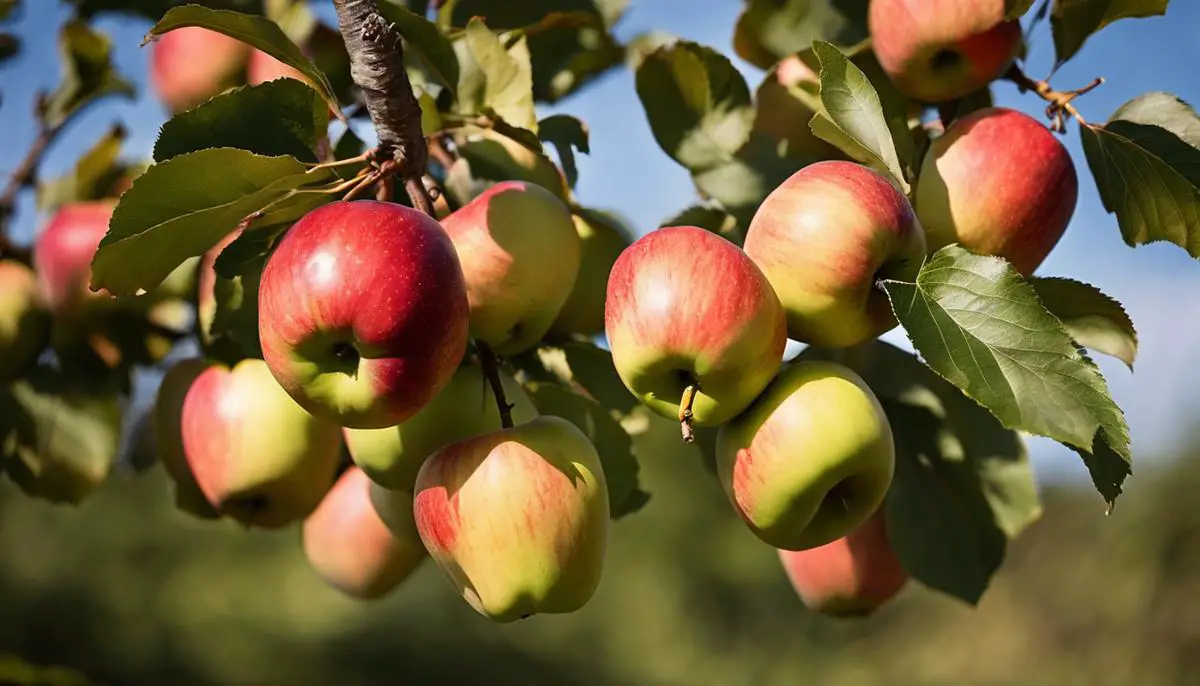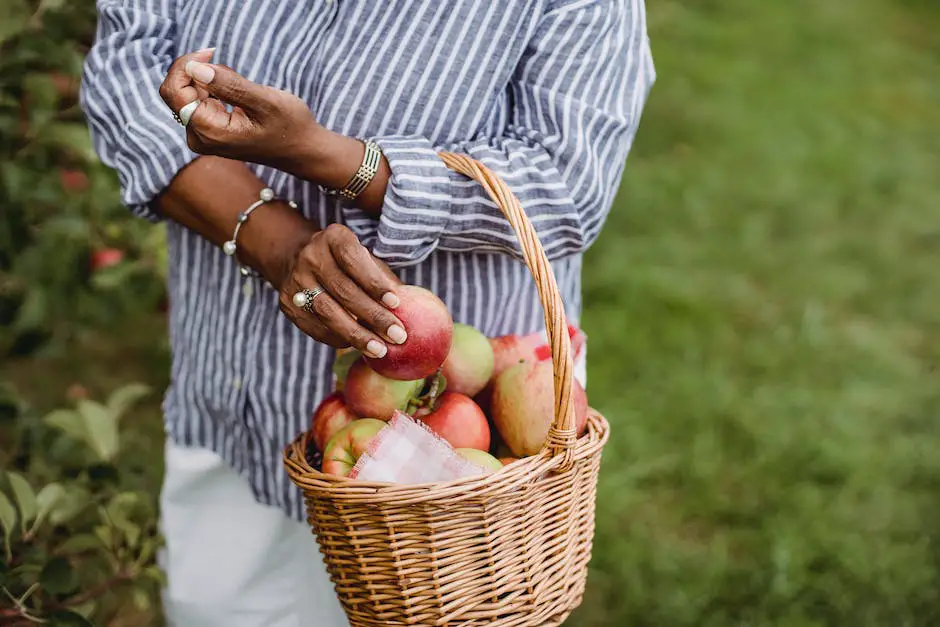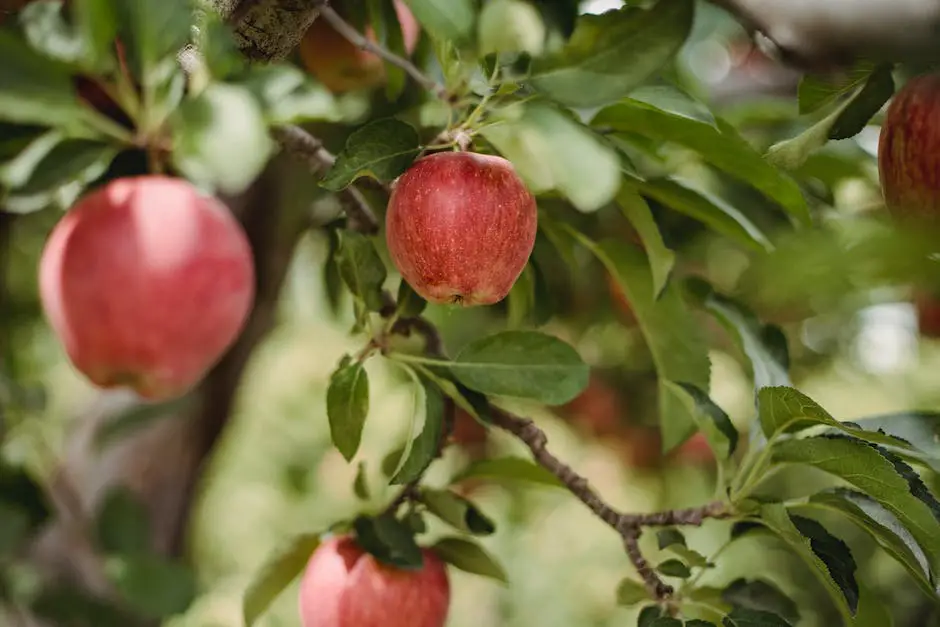Apple picking, a quintessential autumn activity, offers a delight unlike any other. With chilly air nipping at your cheeks and the enticing smell of ripening apples surrounding you, the apple orchard beckons. The experience is made even more satisfying when you come home with a basket full of perfectly ripe, unblemished apples. However, a successful and safe apple-picking expedition involves more skills and knowledge than you might assume. It’s not just about grabbing the first fruit you see; there are definite signs you should look for that indicate ripeness, including color and firmness. Furthermore, proper techniques for removing an apple from a tree are vital, ensuring you do not damage the tree, compromise future harvests or risk your safety.
Identifying Ripeness of Apples
Identifying Ripe Apples: A Handy Guide for Every Parent
As seasoned parents, let’s admit it – distinguishing between ripe and unripe apples can be a bit of a puzzle. Yet this knowledge is golden, especially during apple-picking season. Plus, getting the kids in on it brings both education and fun to the whole adventure. So let’s dive into a few easy tips to tell if those apples are ready to be plucked and enjoyed.
First things first, color provides a valuable clue. Everyone knows the beautiful, bright red apple often depicted in storybooks. However, it’s important to note that not all ripe apples are red. Some types, like Golden Delicious and Granny Smith, take on a lovely yellow or green shade when they’re all set to eat. No matter the type, ripe apples will typically have a vivid, deep color. A great rule of thumb is to look for consistency in color all around the apple for the surest sign of ripeness.
Secondly, consider giving the apple a friendly squeeze. Yes, it’s time to get hands-on! Walk up to that apple tree, grab an apple gently, and press the skin slightly. If it yields to pressure and feels slightly soft but not mushy, that’s a good cell signal it’s ripe. Yet, please be warned – bruised apples may also feel soft, so it’s critical to combine this test with others.
Next, pay attention to the aroma. Ripe apples like to brag about their ripeness with a sweet and fruity fragrance. So, in the quest for the perfect apple, don’t forget to use your sense of smell. If the apple still gives off a leafy odor, it might need a few more days on its branch.
Finally, check the apple’s background. No, not its family tree, but the so-called ground color. This is the base color of the apple’s skin, under its main color. During the first stages of apple’s life, the ground color is green. When the apple ripens, the ground color turns yellow or white.
Get ready to share this savvy knowledge with the kids and turn apple picking into a learning adventure. Distinguishing ripe apples will now be a breeze, and the delight of biting into a perfectly ripe apple will be worth all the effort. Remember, as always, that no test is 100% foolproof. It’s all about using these signs together to make the best judgment.
Happy apple picking, parents and little ones! Let the joy of Fall family adventures begin!

Proper Apple Picking Technique
Unpicking The Art Of Apple Picking: Preserving Trees and Enjoying Juicy Harvests
Every fall graces us with the delightful spectacle of apple-picking. An age-old family tradition, it also hands over a vital life lesson to our little ones, cultivating an appreciation for nature alongside an understanding of responsible harvesting. Now that we’ve figured out some fabulous ways to identify ripe apples, it’s time to shift our focus slightly – how can we pick these tempting fruits without damaging the good ol’ apple tree?
The first step in apple-friendly picking requires an understanding of the apple’s attachment to the tree. Picture this: a tree is a complex organism, much like us, entities that generously offer their fruits every season. However, we need to ensure our harvest doesn’t lead to collateral damage.
When you’ve spied your prize apple, rather than hastily plucking it out, approach it with the gentle grace of a ballroom dancer. Nestle the ripe apple in your palm. Remember, no yanking or pulling involved. Nature has a simple secret code. If the apple is ready to be picked, it will come away from the tree with a simple and easy twist. Think of a light upward twist motion, akin to turning a doorknob, rather than a drag down. This motion efficiently breaks the small twig that connects the apple to its branch.
Precision is key. Try to keep the twig, or pedicel, attached to the apple when you pick. This keeps the tree intact and minimizes any unnecessary exposure to pests and diseases. Not just this – it also extends your apple’s shelf life, promoting a longer storage period.
Picking an apple is a two-handed task. Use one hand to hold the branch and the other to coax the apple away. This ensures the branch does not get stressed or broken and stays healthy for future fruit-bearing seasons.
Do an apple-check before you move to your next conquest. If you notice a few apples clustered together, opt for the ripest one and let the others continue their journey towards ripeness.
While picking the apple, look out for leaves that might come off with it. Try your best to leave them on the tree. This minor action helps the tree remain strong and sturdy, breathing life into the next season’s apples.
Picking apples is a joyful tradition built on patience, care, and understanding. By showing respect for the trees that gift us these organic treats, we ensure a plentiful harvest in the years to come.
Lastly, a gentle reminder – keep an eye on the kids when they start picking apples. Their enthusiasm is infectious and irreplaceable, but they will look up to you to learn the correct, tree-friendly way of doing things. This is not only a fun family outing but also a chance for them to understand how to value nature’s offerings and interact with them thoughtfully and responsibly.
Apple-picking season is a magical time that straddles the carefree spirit of summer and the cozy embrace of fall. Here’s hoping your next apple-picking trip becomes an enjoyable, learning adventure that is just as good for your family, as it is for the trees!

Safety Measures for Apple Picking
Venturing deeper into the apple picking adventure, safety should always be prioritized. When involving children, it becomes even more critical to ensure safety and care. Teaching them these safety rules is equally valuable in cultivating a sense of responsibility and knowledge about sustaining nature.
As a parent, it’s crucial to demonstrate the right way of picking apples to prevent any injuries. Before plucking the apple, ascertain the attachment of the apple to the tree. The stem should be intact, and the apple should be firmly attached. It’s essential to maintain gentleness while picking to avoid roughly jostling the tree or breaking the branches.
Model the proper technique for picking apples. Do not tug hard on the apple. Instead, get a hold of the fruit and twist it upwards and outwards gently. This way, the apple will come off the tree easily without causing any harm to the tree.
When picking an apple, try to leave the twig attached to the apple. This helps extend the life of the apple and prevents spoilage. Keeping the twig attached also helps avoid any premature rotting at home.
Show the kids how to pick apples cautiously ensuring that the picking process doesn’t stress or break the branch. If an apple is too high and out of reach and requires a lot of stretching, consider using an apple-picking tool or leaving it. Climbing trees or using ladders might lead to accidents, particularly when kids are involved.
Typically, multiple apples grow in clusters. Guiding the children to choose the ripest apple from such a cluster, usually the one furthest out on the branch, teaches them to be observant and mindful.
Ensure the focus is not just on the apples but also on the leaves surrounding them. Leaves play a vital role in photosynthesis and overall tree health. Encourage leaving the leaves on the tree, reinforcing the concept of only taking what we need from nature.
Ensure to end each apple-picking expedition by emphasizing the importance of respecting and valuing the trees. It’s a wonderful chance to reiterate that these trees provide apples and many other benefits like oxygen, shade, and habitat for birds and insects.
Apple picking isn’t just an activity; it’s an opportunity. It teaches children about nature, responsible harvesting, and appreciating what the earth has to offer. By practicing the above-mentioned safety precautions, families can have memorable, educational, and safe apple picking experiences.

Safety should never be compromised during your apple picking adventures either. Donning appropriate attire and mastering the correct use of an orchard ladder may seem unimportant in our excitement to get to the apples, but no apple pie, crumble or cider is worth an injury. Moreover, handling each fruit with suitable care allows us to bring home a harvest free of bruises and damage. Armed with these insights on ripeness identification, picking technique, and safety measures, embark on the apple-picking season with confidence. Treasure the thrill of being amongst rows and rows of apple trees while knowing that the apples you pick are at their peak, picked properly, and handled with the utmost care. Needless to say, your apple creations will taste all the better for it.